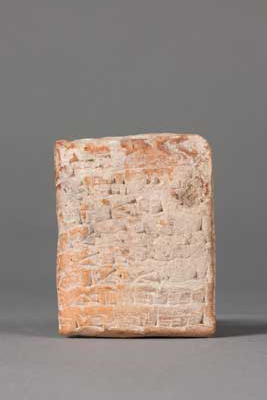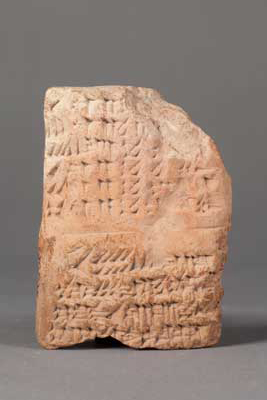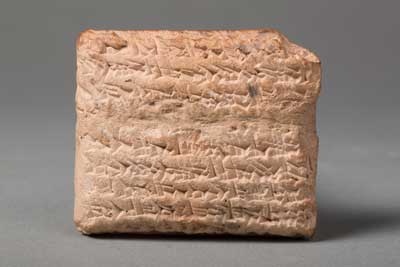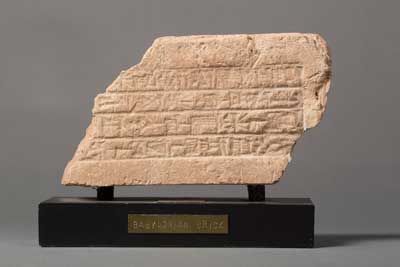
Wedge Shaped Writing
In the late 4th millennium BC a form of writing now called cuneiform (which means wedge-shaped) arose in Mesopotamia amongst a people known as the Sumerians.
In the late 4th millennium BC a form of writing now called cuneiform (which means wedge-shaped) arose in Mesopotamia amongst a people known as the Sumerians. A cuneiform sign is composed of at least one of three basic wedges, which can be combined to create infinitely complicated signs.
By pressing the end of a reed stylus into moist clay, the Sumerians were able to draw. Initially, what they drew were just pictures that could stand for an object, or the action which that object did. For example, a picture of a mouth could mean either the noun ‘mouth’ or the verb ‘to speak’.
Eventually the picture could also be the syllable(s) in the word which the picture represented. Since the Sumerian word for ‘mouth’ was ka, the same sign could be used for writing the syllable ka in another word. Over many centuries a complicated system of writing developed in which the pictures – which eventually became so stylized as to be unrecognizable as such - could represent either whole words (called ideograms) or individual syllables (known as syllabograms).
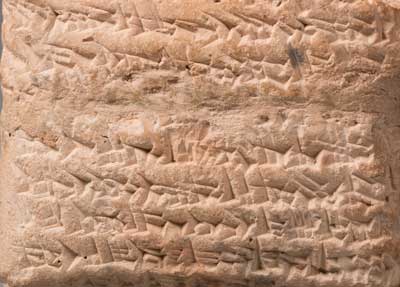
A close up of a cuneiform tablet, which clearly shows the wedge shaped impressions in the clay. Logie Collection Acc# 219.14
Cuneiform script, in its developed form, had upwards of 500 signs. Most signs had several syllabic and ideographic values. For example the sign PA, (originally a picture of a branch or staff), could be read as the word pa (meaning branch), or as the word gidri (meaning staff), or as the verb sìg (meaning to strike or beat), or as the word ugula (meaning the boss, or person who holds the staff and beats the worker). Note that the Sumerians’ society was not politically correct!
Sumerian is not obviously related to any other language, but the Sumerian cuneiform script eventually served for writing other peoples’ languages as well, such as the Assyrian and the Babylonian languages in the 2nd and 1st millennia BC. In an adapted form, the Hittites in Asia Minor used cuneiform during the 2nd millennium BC, as did various other peoples such as the Luwians and the Hurrians. Other scripts such as Elamite and Old Persian were based on cuneiform.
